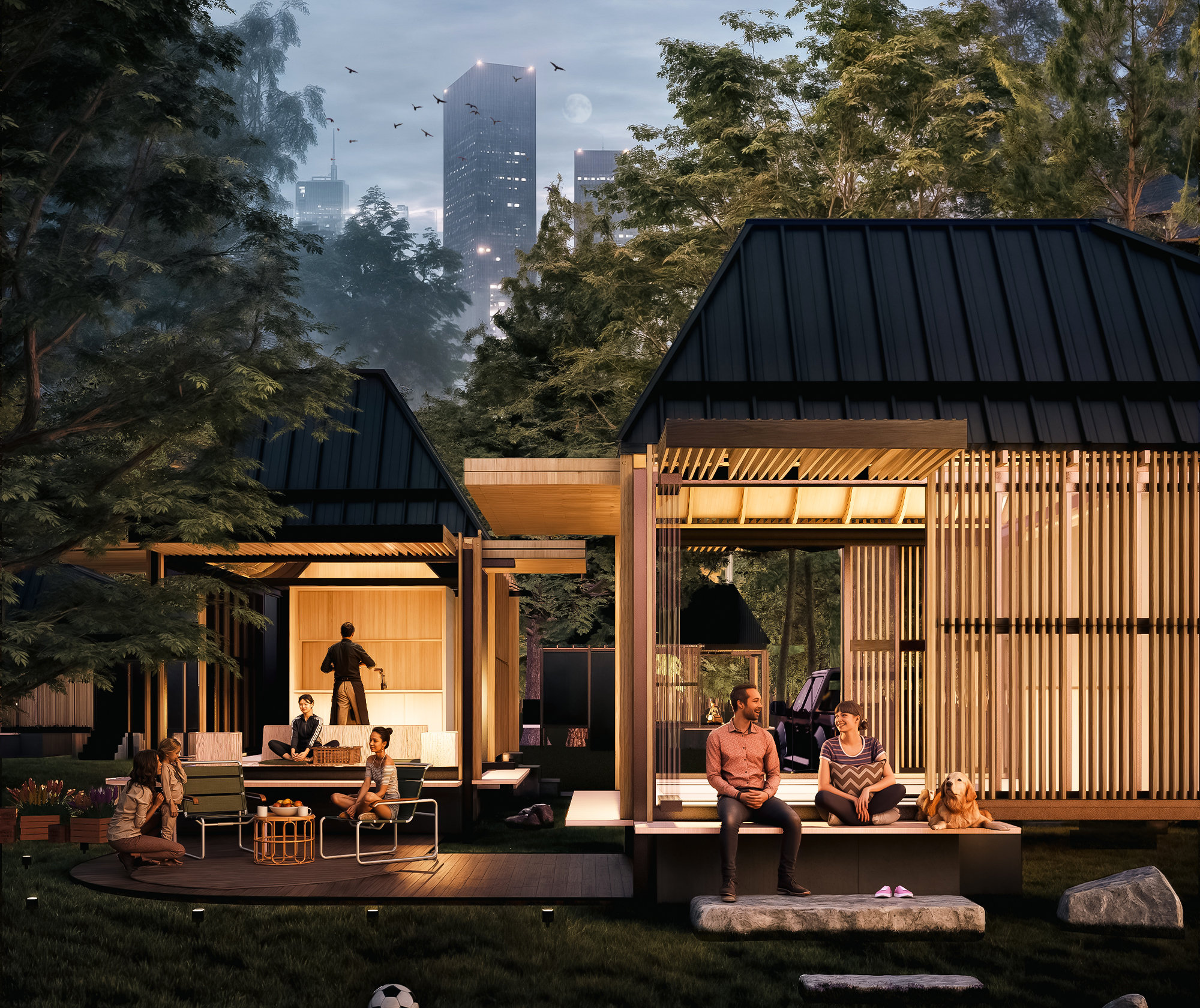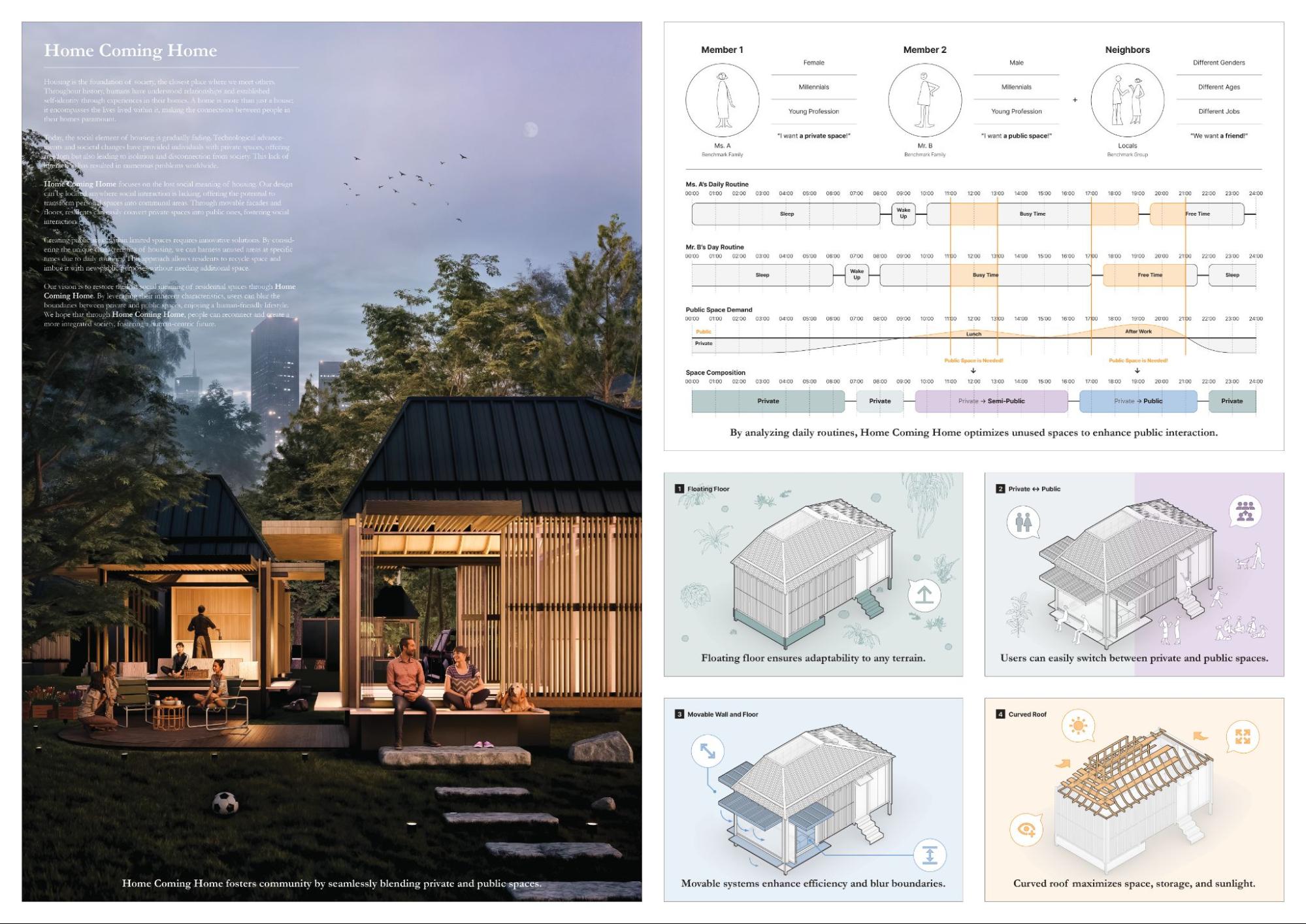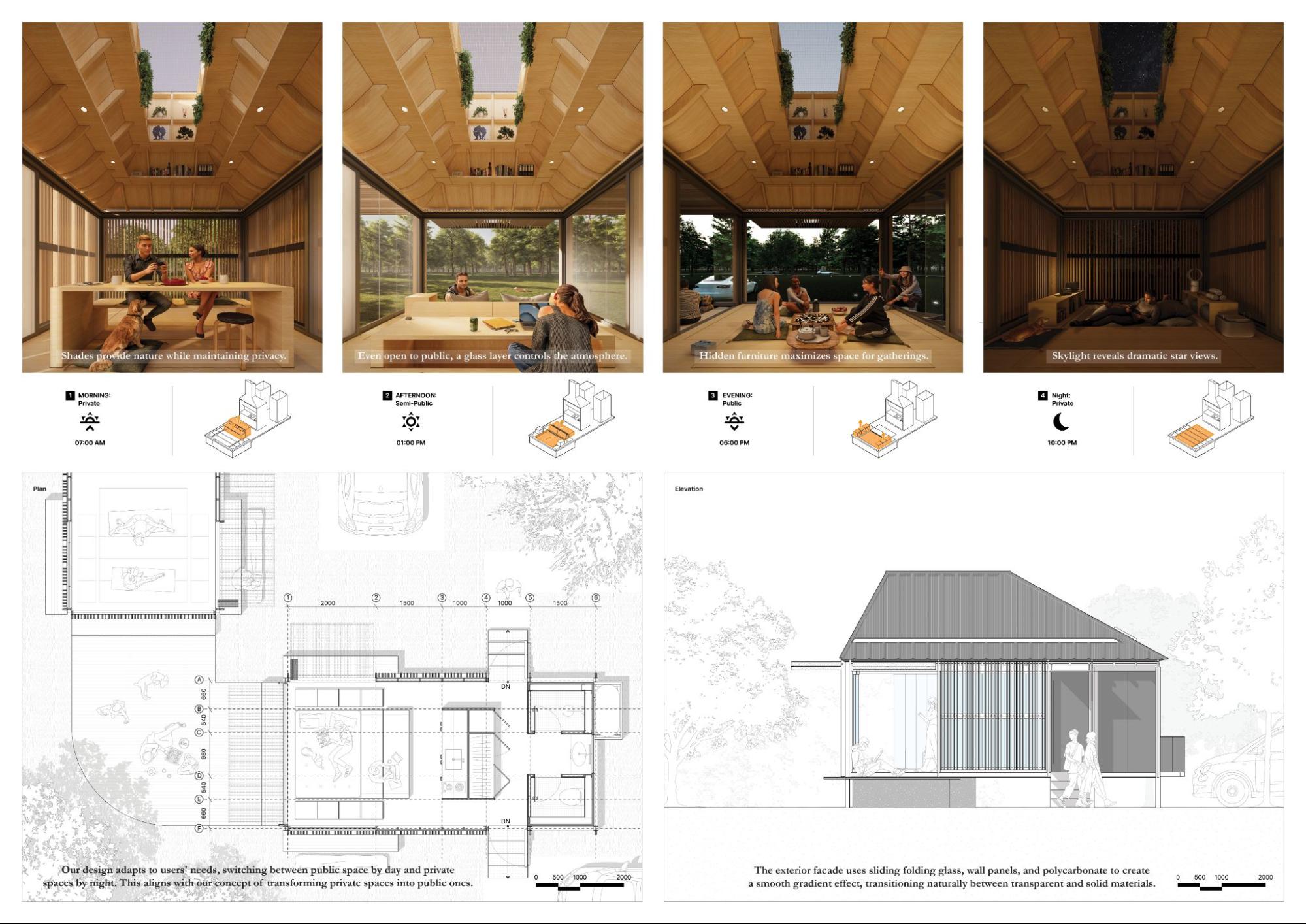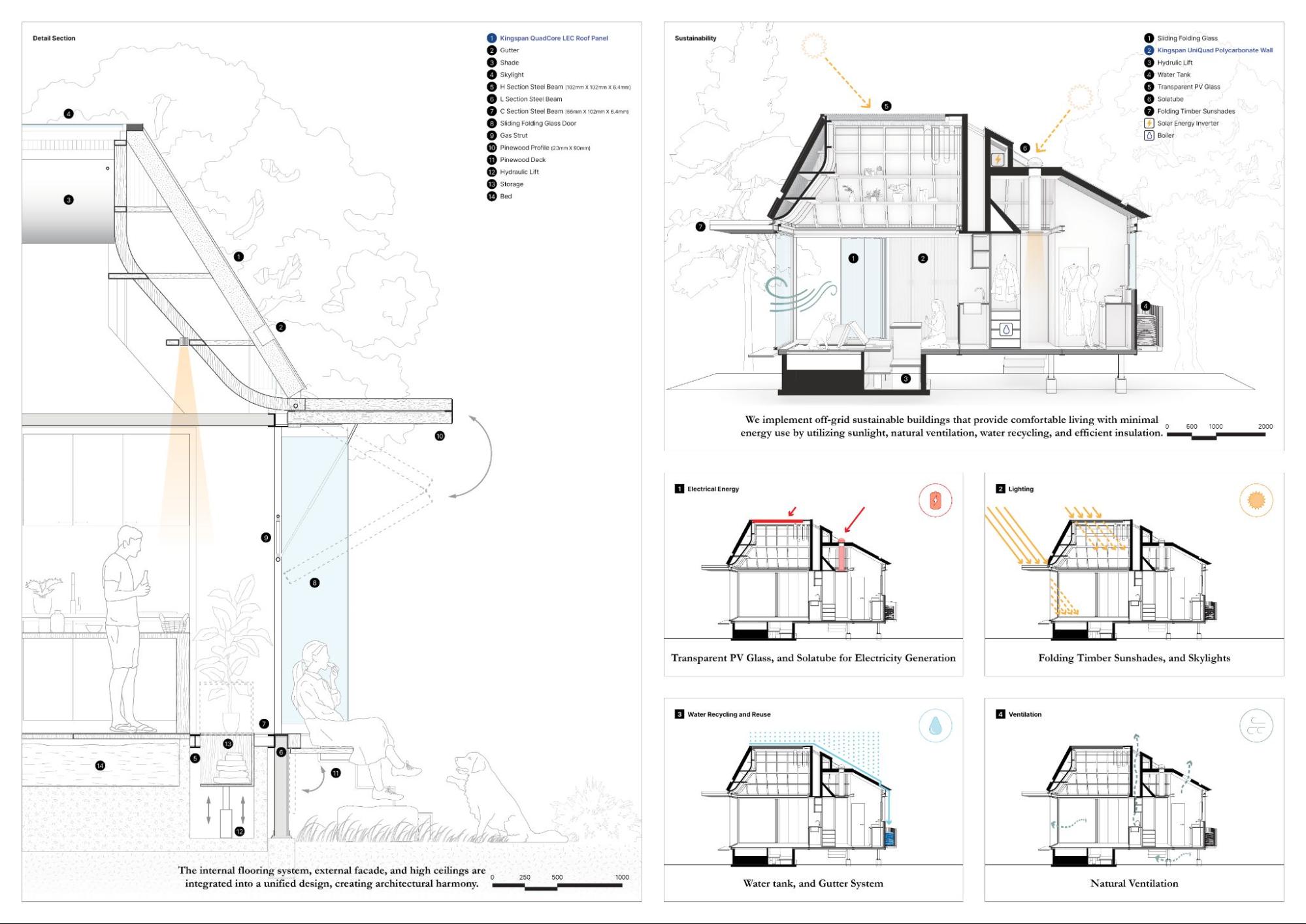2025-06-25
Michael Reyes
Design Dispatch, New York

In the seventh annual MICROHOME architecture competition—hosted by Buildner in collaboration with Kingspan—“Home Coming Home” was named among the top entries from over 100 countries. Designed by Yoojin Park (team lead), Sanghyo Kim, and Ju Sang Lee, the project explores how micro-housing can become a tool for reimagining domestic life in response to today’s shifting cultural and economic landscape.
The concept proposes a compact yet deeply adaptive living unit for a young professional couple, one shaped by the realities of high housing costs, social isolation, and unpredictable work patterns. Rather than treating size as a limitation, the team used spatial constraint as a generative force—prompting innovation in material usage, movement, and sequencing.
At the core of the design is a flexible interior system that transforms throughout the day—living areas become workspaces, storage recedes to reveal sleeping zones, and private corners open up for shared use. These architectural moves are not just functional; they’re intended to reflect the emotional rhythm of contemporary life. The result is a dynamic environment that supports the evolving needs of residents, creating space for solitude, intimacy, and collaboration within a compact footprint.

A key design feature is the use of movable façade elements and modular flooring systems, which enable residents to customize their privacy and connectivity in real-time. Selecting shared infrastructure between adjacent units offers a soft edge between individual and collective living, promoting casual interaction without sacrificing personal space. These strategies introduce a new typology for micro-housing that emphasizes adaptability and cohabitation as architectural values.
“We approached the project as a study in empathy,” Park explains. “It’s about creating a home that doesn’t just shelter people, but supports the way they live now—fluidly, socially, and with intention.”
The project also draws from vernacular housing types and small-footprint dwellings in East Asia, subtly translating their spatial logic and communal aspects into a contemporary context. Elements like open thresholds, layered screens, and dual-purpose furniture support both traditional domestic routines and modern flexibility. These design cues root the project in cultural familiarity while pointing toward a more inclusive housing future.
“Home Coming Home” expands the MICROHOME competition’s mission by proposing a new kind of small-scale dwelling: one that restores the civic and symbolic potential of housing. It responds not just to pressing issues like affordability or density, but to the psychological and cultural dimensions of home. It argues for an architecture that acknowledges emotional infrastructure as seriously as physical infrastructure.
In a time when many young adults are delaying or abandoning life milestones due to structural economic pressures, this project insists that good design can still play a role in making life feel possible. It offers an architecture that is both modest and aspirational—crafted not only to solve problems, but to spark new ways of living.

Project Background
“Home Coming Home” was developed by Yoojin Park as team leader, in collaboration with Sanghyo Kim and Ju Sang Lee. The trio—having worked together on a number of competitions and design research projects—brings complementary strengths in urban strategy, sustainable architecture, and social design. This project reflects their shared commitment to housing as a space of possibility, dignity, and connection.
About the MICROHOME Competition
Hosted each year by Buildner with support from Kingspan and other industry partners, the MICROHOME competition invites architects and designers from around the world to create forward-thinking solutions for small-scale, off-grid living. Emphasizing affordability, sustainability, and social impact, the platform aims to foster bold and practical housing models for the future.
